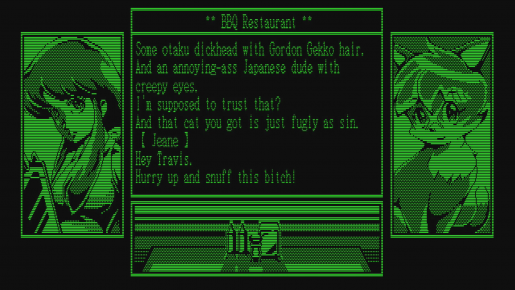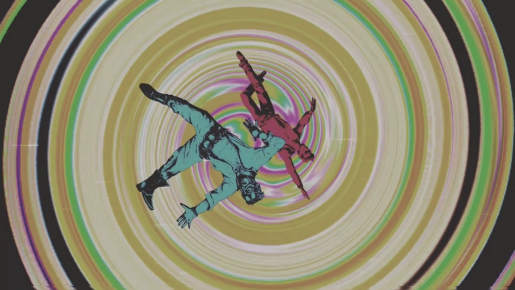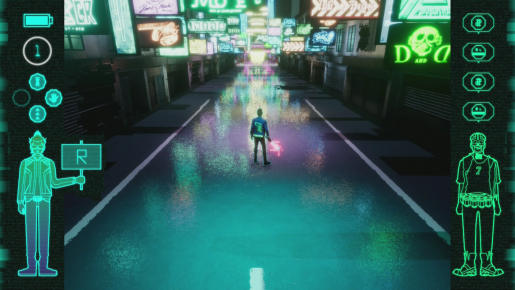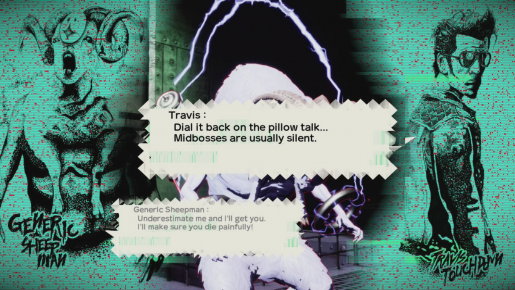As great as games like God of War and Spider-Man are, it’s largely due to the substance. They have big stories to tell, worlds to explore and people to defeat and it’s done in a way that might be unrealistic but still grounded in a set of rules that seem more mature. Other games, like No More Heroes, opt out of this and go for style. There are crude jokes, such as how you power your saber, with enemies and situations that are far from realistic. Neither approach is right or wrong, just different sides of the overall experience. With Travis Strikes Again: No More Heroes, it doubles down on the style, while retaining the substance. Is it enough to remain a worthwhile experience or it is best just watching sometime later?
Taking place after the events of the previous games, Travis has long given up on being an assassin, only to have his past catch up to him. When Bad Man attacks him for killing his daughter, Bad Girl, in one of the more memorable fights in the first game, the two characters end up in a video game system. After a couple jokes and coming to grips with things, an urban legend says if you collect and beat all the Death Drive MK II games, you’ll receive a wish, something that Bad Man hopes to use to bring his daughter back.
Even if this is the core experience, the actual story is rather comical, leading to an equally silly conclusion. Most of the adventure is a play on how these games and tropes play out, to the point where you can see most of the plot points coming, yet it’s done in a way that is still enjoyable. That being said, sometimes there is too much style and not enough substance.
It isn’t uncommon for Travis Strikes Again: No More Heroes to hand wave plot points or throw in needless and excessive jokes. There are talking animals, the fourth wall is occasionally broken and jokes that involve saying what we, or at least I, are what bring Travis to his goal. None of these things are bad, per se, they’re just not used sparingly enough to make it seem like a joke, as much as a writer throwing everything out there and hoping something sticks.
Thankfully, gameplay segments handle this approach better. Even if the dialogue portion, which is told largely through a more dated looking Metal Gear Solid codec-esque segment, getting a new game remains exciting. Every game starts with both Travis and Bad Man falling into the game via a segment that looks like it would be home in a ‘70s sci-fi program, complete with a low budget Death Drive title sequence and a small opening. Several of these openings were great, even if they didn’t match the overall tone of the game, leaving a lasting impression.
The same can not be said for the quality of said games. Even if the core gameplay is the same, so you have a sword with a finite amount of power, which still needs to be swung to charge, various skills you can find, complete with a light and heavy attack, dodge and jump, it’s used differently by each game.
The first one plays like a linear adventure, where as another one requires you to solve puzzles to progress, with another one using racing segments and so forth. Even the oddest games eventually boil down to some scenes where you fight enemies, a sheep mini-boss and a final boss battle, it does a lot to make each game stand out. Said games also have secrets to discover, most of which were pretty straightforward, with hidden characters being far more difficult. These can and potentially will motivate players to look for everything Travis Strikes Again: No More Heroes has to offer, even if it’s the deepest.
Where things start to get bumpy is the depth and overall thought process behind enemies. Higher difficulties don’t change much besides swapping numbers, with the hardest levels creating a challenge from an overwhelming number of enemies or simply multiple annoying ones. Any time I died it wasn’t from being out played, as much as being in a bad situation and having an unlucky outcome. Nothing on the initial highest difficulty was good enough to stop an actual run, though the last level pushes the line between annoying and outright frustrating, it just got increasingly less enjoyable to play.
Another core problem is enemies aren’t that deep and the same tactics working across the board. For instance, I relied heavily on slowing enemies down and stunning them, which worked on everything besides those immune to lightning, making the average fight less about skill and more about damage per second. With most generic enemies I could stun lock them if I clear out weaker foes or they were by themselves. All it takes is two heavy attacks and they’re unable to do anything about it. Bosses require a bit more, though all you need to do is wait for an opening and not get greedy. Most times you can clear a fight without taking damage if you’re slow enough, with nothing being so difficult you can’t win taking more than a few hits.
Verdict
Overall, Travis Strikes Again: No More Heroes relies way too much on meta humor and very bland gameplay. Fans will likely have a lot of fun, enjoy where the story goes and like the overall experience, where as action or more hardcore players will likely find the shallow gameplay boring. More often than not, since the experience is more repetition than anything else, it doesn’t take long to get bored and want to move onto other things. And, even if the games are different, it doesn’t lead to the most satisfying of places.
[Editor’s Note: Travis Strikes Again: No More Heroes was reviewed on Switch platform. The game was provided to us by the publisher for review purposes.]




